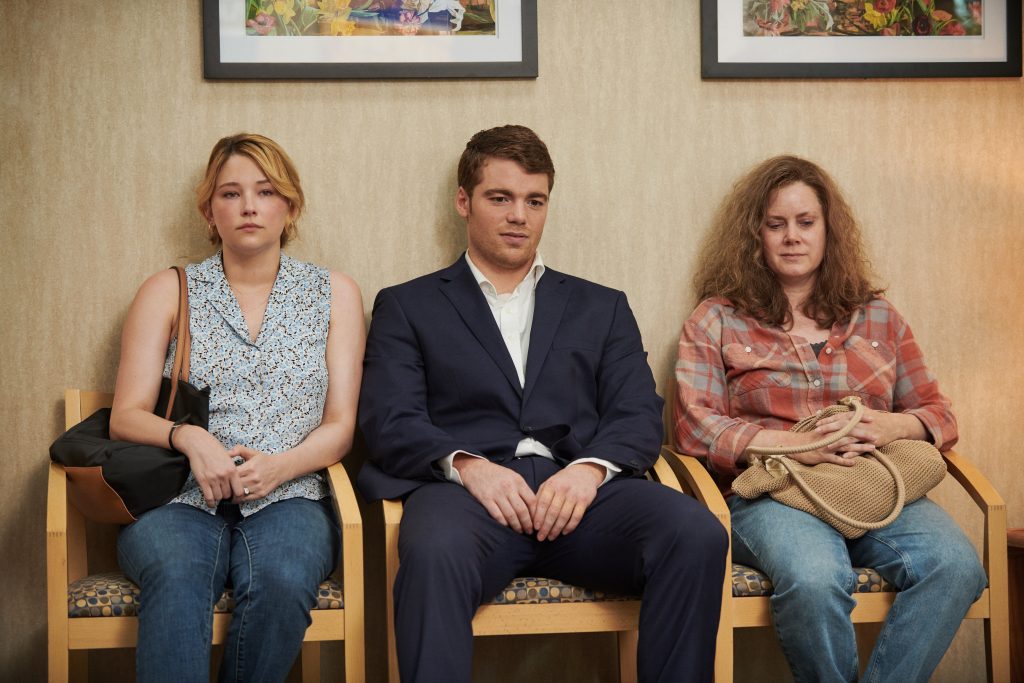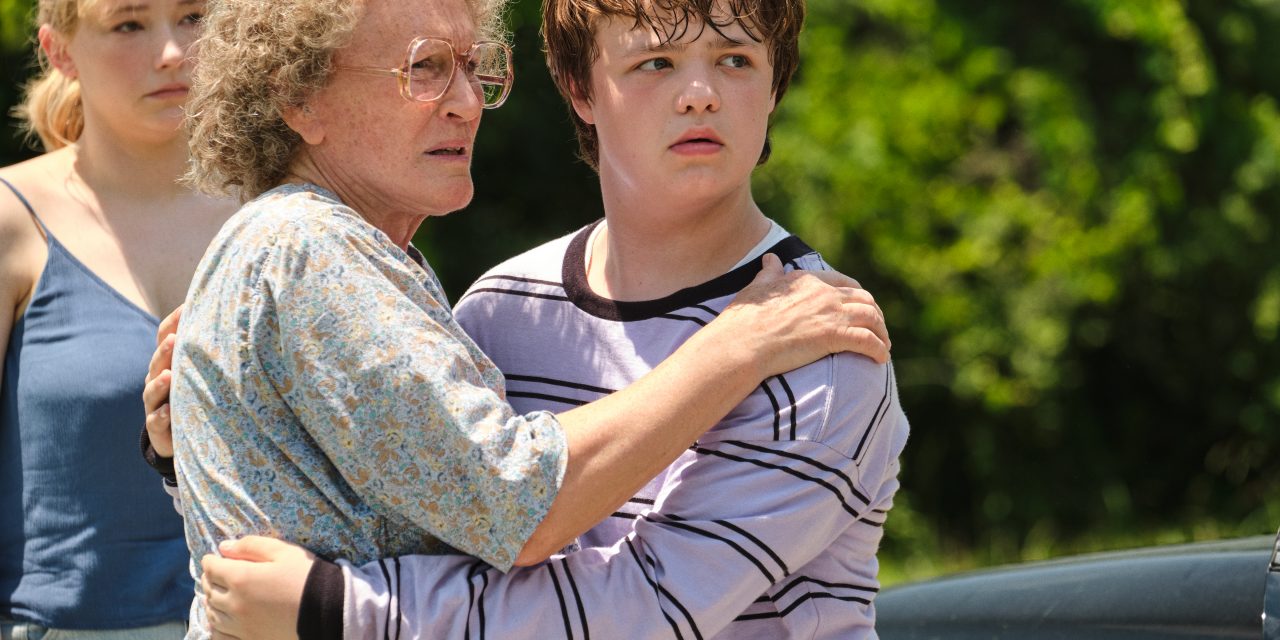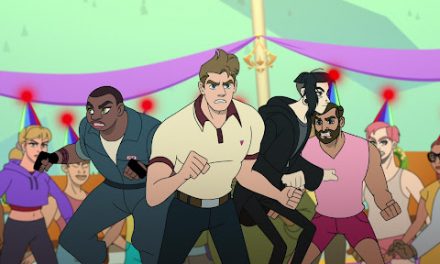Set in Jackson, Kentucky in 1997, Netflix’s “Hillbilly Elegy” opens with sweeping views of a forest as the camera follows a winding road through the trees. In a drive-by, we get glimpses of teenagers hanging out in the truck bed of a rusted pick-up, women in cut-off jeans hanging laundry to dry and lawns cluttered with old auto parts. Nothing could sum up the movie, directed by Ron Howard, better than this opening scene: a cursory glance through a rear-view window that assumes it knows everything about Appalachian culture.
Based on the best-selling 2016 memoir by J.D. Vance, “Hillbilly Elegy: A Memoir of a Family and Culture in Crisis,” the film depicts J.D. (Gabriel Basso) as he grows up with one foot in the Kentucky backwoods and the other in metropolitan Middletown, Ohio. The plot jumps between J.D.’s past and present, tracing a history of intergenerational trauma. In the past, J.D. weathers an unstable and abusive home environment as his single mother, Bev (Amy Adams), struggles to hold down a job, battles drug addiction and brings home a never-ending series of boyfriends. In the present, he’s a law student at Yale, trying to win a summer internship when he gets a phone call from his sister Lindsay (Haley Bennett): their mom is using again. Returning to Middletown, J.D. has a mere 24 hours to find an affordable rehabilitation facility for his mom if he wants to make it back in time for a job interview.
For a movie inspired by a real memoir about real events and real people, the characters and plot fall remarkably flat. “Hillbilly Elegy” represents just the latest iteration of Hollywood taking tired narrative conventions and playing Mad Libs. It’s a basic rags-to-riches story that could have featured anybody, anywhere; this one just happens to be about a boy growing up in impoverished rural Kentucky who ends up — surprise, surprise — going to an Ivy League school. To really hit home the fact that J.D. is from Appalachia, the film makes sure to draw attention to the fact that he pronounces “syrup” monosyllabically, as well as to allude vaguely at one point to the Hatfields and the McCoys, referring to the infamous 1860s feud between two families on the Kentucky-West Virginia divide. Littered with such underwhelming stock phrases such as “It’s where my people come from,” and “We were all different in Middletown somehow, like something was missing; I don’t know, maybe hope,” J.D.’s voiceover narrates a hollow shell of a story that could have been anyone’s. Solely depicted as being caught in a cycle of abuse, the characters are reduced to overused stereotypes about Appalachian work ethic, addiction and general “backwardness.”
From the moment of the “Hillbilly Elegy” print publication, the story quickly became construed as the key to understanding Appalachia. In 2016, The Economist claimed that the memoir was the most “important book about America this year.” Not about Vance, not about a family, not even about intergenerational trauma, but about America — as though one person’s story could stand in for everybody else’s. 2019 saw the publication of a response to Vance’s memoir in the form of an essay, poetry, prose and photography collection entitled “Appalachian Reckoning: A Region Responds to Hillbilly Elegy,” which has since won the prestigious American Book Award for criticism. In their introduction, editors Anthony Harkins and Meredith McCarroll wrote that the book was compiled to “speak multiple truths about multiple experiences,” challenging the notion that “any single book, including this one, can sum up the entirety of Appalachia and what it means to be Appalachian.”

Young Vance (Owen Asztalos) and Mamaw (Glenn Close) watch Bev be apprehended by the authorities. (Netflix)
As the introduction of “Appalachian Reckoning” points out, Vance was at one point, following the massive success of his memoir, under consideration as a Republican candidate for the Ohio Senate. His trajectory from the humble origins of Appalachia to the nation’s premier law school maps perfectly onto the myth that anyone in America can “make it” if they just try hard enough — a parallel hardly lost on Vance himself. The editors of “Appalachian Reckoning” note that Vance often will jump at the chance to describe his own story as being an “up from your bootstraps” kind of “American Dream.” And, as one 2019 Amazon review of the memoir has so astutely noted, the book reads like Vance building a political platform for a future bid for office. In this light, far from being an “elegy” for Appalachia, Vance’s memoir amounts to a mere publicity stunt. Its lack of nuance in its depiction of Appalachia becomes not an oversight at all but precisely the point. A flattened depiction of Appalachia provides the perfect backstory for J.D. while he proceeds to cast himself in the best possible light for candidacy: the one who made it out.
The climax of “Hillbilly Elegy” finds J.D. checking Bev into a motel room — she refused rehab — where, after a trip to the neighboring gas station, he comes back to see her attempting to use heroin. J.D. wrenches the needle away, flushes it down the toilet and manages to convince his mom to go to sleep. There, sitting on the edge of the bed, he takes Bev’s hand and breaks the news: “I can’t stay,” he says. “I’m not saving anyone here.” Or, in other words, J.D. makes the problematic assertion that if he’s to have any chance at “saving” his family, then he has to leave — as though Appalachians can’t “save” themselves from within Appalachia. Instead, the movie suggests that only graduates from Yale Law can do that, re-enforcing the harmful stereotype that Appalachians need outsiders to come to their rescue. This is made even more remarkable by the fact that the only reason J.D. can afford to leave his mom alone at this moment, at risk of another heroin overdose, is his sister Lindsay conveniently swapping in. J.D. makes his interview in time, wins the summer internship and, presumably, can now get hard to work rescuing his family (and, somehow, Appalachia at large) from afar. When really, the actual savior in this scene isn’t J.D. at all but Lindsay. Lindsay, who stays behind in Kentucky to do the on-the-ground task of getting her mother back on her feet. Lindsay, who has kids of her own and a full-time job. Lindsay, the proverbial woman who lays herself down so a man can rise.
As someone who grew up in West Virginia, I was frustrated to see “Hillbilly Elegy” reinforce negative stereotypes that made up a large part of mine and my friends’ childhoods. As my friend Mary Linscheid, a sophomore at West Virginia University majoring in Appalachian studies and music, puts it: “Appalachia doesn’t need outsiders to save them, but what would be helpful is if outsiders would take the time to learn the truth about Appalachia and consider how their own actions actually might be causing some of the problems here.” I asked her what a “real” hillbilly elegy would look like, and for Linscheid, focusing on Appalachia’s past is essential for understanding the region. “Look at the ways outsiders have exploited Appalachia through time — from the exploitation of its natural resources and of its workers for the profit of few, to the exploitation and misinterpretation of our stories and culture for the entertainment of outsiders.”

Lindsay (Haley Bennett), Vance (Gabriel Basso) and Bev (Amy Adams) sit in the waiting room of a rehab facility. (Netflix)
“Hillbilly Elegy” is just that: a film written with outsiders in mind, for those who only encounter hill country when taking the scenic route on their way to somewhere else. Even the original soundtrack, featuring folk-inspired songs titled things like “Rust” and “Steel In Our Veins,” was written by the German classical composer Hans Zimmer, when the film could’ve easily showcased authentic Appalachian composers like Nate May, Rachel Grimes or Brian Harnetty, to name a few.
If you’re hoping for an inside look at Appalachia, skip “Hillbilly Elegy.” Instead, try the host of artists compiled in “Appalachian Reckoning,” or watch “Don’t Cry For Us, J.D. Vance: A Virtual Reading by Ohio Appalachian Authors,” a webinar recently hosted by WVU Press, Downbound Books and Urban Appalachian Community Coalition.
Dismantling stereotypes about Appalachia will take more stories in the mainstream. Vance’s depiction of making it out might be one of those stories, but it is far from the only one. “There is definitely a history of Appalachians being told to get out if they ever wanted to be successful in life, but that’s slowly changing, with my generation in particular,” says Linscheid, herself an eighth-generation West Virginian. “There is a certain pride that comes from being Appalachian, and I hope to see that pride invested back into the Appalachian communities..”
Anastasia Knudsen (22C) is from Morgantown, West Virginia, double majoring in creative writing and comparative literature. She edits for Canopy Forum, a digital publication about the interactions of law and religion. Outside of devouring fiction, her interests include running, caffeine and geology. Contact Knudsen at ana.knudsen@emory.edu.






